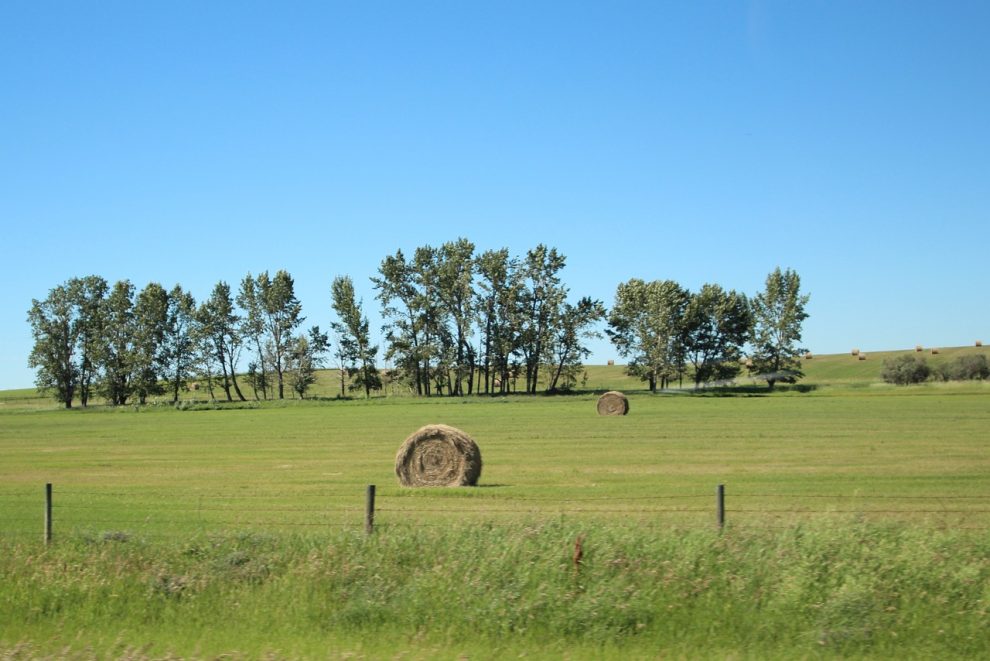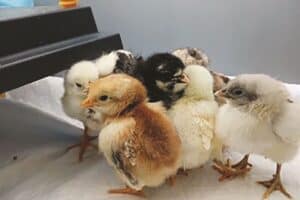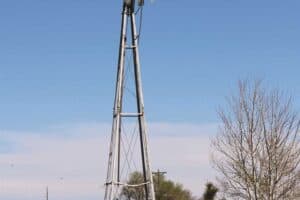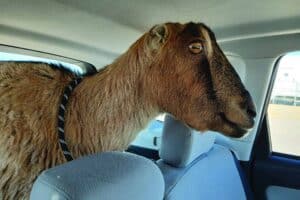The cost of hay is creeping upward in Colorado. Several factors contribute to the trend.
Colorado Springs Therapeutic Riding Center, established in 2008, services close to 200 students on a weekly basis. Twenty-three of the almost 50 head of horses at the facility belong to the program. “We go through quite a bit of hay,” said Nancy Harrison, the chief executive officer of the center. The facility offers one-on-one instruction for both able-bodied students and students with special needs. They have three PATH instructors (Professional Association of Therapeutic Horsemanship International), as well as Occupational and Physical Therapist, or hippo-therapists.
Harrison said currently their hay costs about $13 per bale. “Our hay dealer is keeping it pretty nice. It’s gone up a couple dollars since last year,” she said. “We get some grants on horse care, and that helps … then we just supplement through other grants and what we charge for our lessons.” Harrison has used the same hay dealer for several years. “He said he’s pretty good this year until first cutting so it (prices) shouldn’t go up any is what he’s hoping,” Harrison said.
Wings Like Eagles is another nonprofit organization with horses. Established in 1986, Wings Like Eagles has evolved through the years. Currently, the program offers two weeks of camp during the summer. Michele Bremer, the founder and director of the program, said the focus of camp is twofold. “For the teenagers, we consider this to be a program of character training and leadership,” Bremer said. “They get that experience by serving younger kids, some of whom have special needs such as autism, hearing or speech impairment, learning disabilities, etc.” Throughout the rest of the year a small number of families are invited to participate in Farm Day. She said a small number of mothers with kids participate in projects where they learn to water the horses, empty the hoses and learn about closing gates on a farm, etc. “T. Harmon runs the program. It’s a way she can minister to other moms,” Bremer said. “It hasn’t gotten any easier to be a mother to little kids, and several of these moms are fairly isolated.
“Hay prices are a part in a real shift in the demographics of our country,” Bremer said. “It was not uncommon to have a horse in your backyard here. You’d be hard pressed to find a horse in a backyard anymore … it’s just the way it is.” She said that farmland is being sold to developers, so that land is no longer producing hay. “Marijuana is now competing with other crops,” Bremer said. “People can make more money selling their land or by growing weed on it than by selling hay.” She also said the population that used to spend time baling hay either isn’t willing to or simply isn’t there anymore.
“It’s sobering for me. I’m looking at a cost of $3,000 per horse per year for Wings Like Eagles, which has doubled in the last two to three years,” Bremer said. “I have to raise twice as much money, which means I have to spend my time raising money or finding work to earn money to contribute to Wings.”
Like Harrison, Bremer has used the same hay dealer for several years. “It’s not the cheapest, but I found inexpensive hay in Pueblo and it turned out it was full of goat heads (weeds). I had to pay to take the hay to the dump,” she said. “After that experience, I have gone with Kyle because I know I will always get good hay.”
Kyle Scott has been selling hay for 13 years, and he shared his insights as to what drives the increase in hay costs. “Obviously, inflation is one factor; I don’t know if it’s a huge one. The cost of equipment is a very big one,” Scott said. He said equipment is getting more sophisticated and a new tractor can cost $175,000. “Balers have almost doubled in price over the last 15 years,” Scott said. “Irrigation water is a major point of contention between irrigators and municipalities that provide the water. We’ve become more arid and the demand is much more on the residential and commercial side, which means there’s less for agriculture.” He said it has become more profitable for farmers not to farm and to “sell water to developers so they can build tract homes.” Farmers can purchase irrigated farm ground for $3,000 to $4,000 per acre, but developers will pay $10,000 to $13,000, as long as the water rights are good, Scott said. “There’s a shrinking land base and a shrinking water supply,” he said.
Environmental factors also contribute. A more arid climate is an issue. “There used to be a lot of dry land hay put up around here and there isn’t anymore,” Scott said.
Because there is less land in Colorado dedicated to hay farming, hay suppliers need to travel farther to obtain the hay they do sell. He said there is a smaller pool of farmers and a much greater demand. “The availability is shrinking pretty much on a yearly basis. We put up less hay locally and have to go farther for it,” Scott said. “It’s a lot of miles to put on a load of hay. You have to start calculating what it costs to put on a load of hay, and have to spread that cost over every bale. It can add up quickly.”
The changes in the industry make a difference, too. “They used to run cows, put up hay, haul animals and hay. There were a number of different facets to running a ranch. Now they aren’t multidimensional,” Scott said. “They have a single focus … it’s a drain on other things that used to go along with the lifestyle or business that are no longer needed. It’s why rural towns are drying up. The services are no longer needed when a big company comes in to farm wheat. They don’t need the little repair shop or fab shop or tire shop that a rancher used to need to function throughout the year.”
“There’s more to it than hay,” Bremer said. “Hay tells a story about a changing world.”
Many nonprofit agencies that offer horse therapy are having to deal with higher hay prices.







